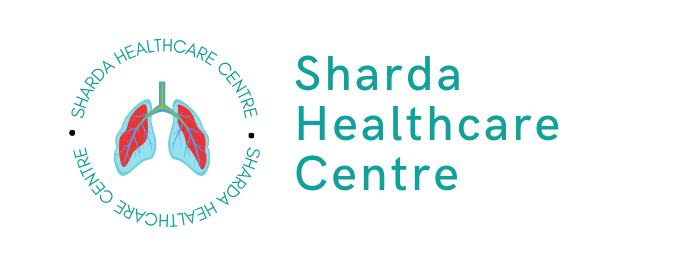
Tuberculosis - Symptoms, Causes, and Treatment
Tuberculosis (TB), often referred to simply as “tuberculosis” or “TB,” is a global health concern caused by the bacterium Mycobacterium tuberculosis. It is a contagious and potentially deadly disease that primarily affects the lungs but can also affect other parts of the body. In this comprehensive guide, we will explore TB in detail, covering its symptoms, causes, and treatment options.
Understanding Tuberculosis
Tuberculosis is an ancient disease that has plagued humanity for centuries. It is estimated that one-third of the world’s population is infected with the TB bacterium, although not all of these individuals will develop active tuberculosis. The disease spreads through the air when an infected person coughs or sneezes, releasing tiny droplets containing Mycobacterium tuberculosis into the environment. People nearby can inhale these droplets and become infected.
Tuberculosis Symptoms
The symptoms of tuberculosis can vary depending on whether it is an active or latent infection. Active TB is when the bacteria are actively causing symptoms, while latent TB is when the bacteria are present but not causing any symptoms. Here are the common TB symptoms to watch out for:
1. Persistent Cough:
A persistent cough that lasts for more than three weeks is one of the hallmark symptoms of TB.
2. Coughing Up Blood:
Hemoptysis, or coughing up blood, is a severe symptom of TB and should be addressed urgently.
3. Chest Pain:
Pain or discomfort in the chest may be experienced due to the infection in the lungs.
4. Fatigue:
TB can cause extreme fatigue, leading to weakness and lethargy.
5. Unexplained Weight Loss:
People with TB often experience significant weight loss due to reduced appetite and the body’s effort to fight the infection.
6. Night Sweats:
Profuse night sweats, often accompanied by a fever, can be indicative of active TB.
7. Fever:
A low-grade fever is a common symptom, especially during the later stages of the disease.
8. Loss of Appetite:
TB can lead to a decreased appetite, contributing to weight loss.
Tuberculosis Causes
Mycobacterium tuberculosis is the primary cause of tuberculosis. This bacterium can survive in the body for years without causing any symptoms, leading to latent TB infection. Several factors can increase the risk of developing active TB disease:
1. Weakened Immune System:
Individuals with weakened immune systems due to conditions like HIV/AIDS, malnutrition, or certain medications are at a higher risk.
2. Close Contact:
Being in close contact with someone who has active TB can increase the risk of transmission.
3. Smoking:
Smoking damages the lungs and weakens the immune system, making smokers more susceptible to TB.
4. Living Conditions:
Overcrowded or poorly ventilated living conditions can facilitate the spread of TB.
5. Healthcare Settings:
Healthcare workers and patients in healthcare facilities can be at a higher risk of exposure to TB.
Tuberculosis Testing
Early detection of TB is crucial for effective treatment and preventing the spread of the disease. Several tests are available to diagnose tuberculosis:
1. Tuberculin Skin Test (TST):
Also known as the Mantoux test, it involves injecting a small amount of tuberculin under the skin and checking for a reaction after 48-72 hours.
2. Interferon-Gamma Release Assays (IGRAs):
These blood tests detect the release of specific proteins in response to Mycobacterium tuberculosis.
3. Sputum Culture:
This test involves collecting a sample of sputum (mucus coughed up from the lungs) and culturing it to identify the presence of TB bacteria.
4. Chest X-ray:
A chest X-ray can reveal abnormalities in the lungs, such as inflammation and cavities, which may be indicative of active TB.
5. Nucleic Acid Amplification Test (NAAT):
NAAT tests directly detect the genetic material of Mycobacterium tuberculosis in sputum or other respiratory samples.
Tuberculosis Treatment
It’s good to know that tuberculosis can be cured and treated. Antibiotics are typically taken in combination as part of the treatment over several months. The most commonly used medications for TB treatment include isoniazid, rifampin, ethambutol, and pyrazinamide. This combination therapy is known as Directly Observed Therapy, Short-Course (DOTS).
Tuberculosis and the BCG Vaccine
The Bacillus Calmette-Guérin (BCG) vaccine is a vaccine used to prevent TB. It is primarily administered to infants and young children in countries with a high prevalence of tuberculosis. The BCG vaccine can provide partial protection against severe forms of TB, such as TB meningitis in children. However, it does not guarantee complete immunity, and its effectiveness can vary.
Causes of Tuberculosis
Tuberculosis is caused by the bacterium Mycobacterium tuberculosis. While this is the primary cause, several factors can contribute to the development and transmission of the disease:
1. Drug Resistance:
The misuse or incomplete use of antibiotics can lead to the development of drug-resistant strains of TB, making treatment more challenging.
2. HIV/AIDS:
HIV weakens the immune system, making individuals more susceptible to TB infection.
3. Poverty and Malnutrition:
Poor living conditions, inadequate nutrition, and limited access to healthcare can increase the risk of TB transmission and progression.
4. Tobacco and Alcohol Use:
Smoking and excessive alcohol consumption can weaken the lungs and immune system, making individuals more vulnerable to TB.
5. Global Travel and Migration:
TB can spread when infected individuals travel or migrate to other regions, contributing to the global prevalence of the disease.
Tuberculosis Disease Treatment
Effective treatment of tuberculosis requires a multidrug regimen and strict adherence to the prescribed medications. There are typically two phases to the treatment:
1. Intensive Phase:
This initial phase involves the use of multiple drugs to quickly reduce the bacterial load and make the patient non-infectious.
2. Continuation Phase:
After the initial phase, a smaller set of drugs is prescribed for an extended period to ensure complete eradication of the bacteria.
Treatment duration can vary but typically lasts for six to nine months. It is crucial for patients to complete the full course of treatment to prevent the development of drug-resistant TB.

The Global Impact of Tuberculosis
Despite the availability of effective treatment, Tuberculosis remains a global health crisis. It disproportionately affects low- and middle-income countries, where factors such as poverty, malnutrition, and limited access to healthcare contribute to its persistence. Additionally, the emergence of drug-resistant strains poses a significant threat to global efforts to control Tuberculosis.
Efforts to Combat Tuberculosis
Global organizations, governments, and healthcare providers are actively working to combat Tuberculosis through various strategies:
1. Research and Development:
Ongoing research aims to develop more effective drugs, vaccines, and International Partnerships: Collaborative efforts between countries and organizations like the World Health Organization (WHO) aim to coordinate global Tuberculosis control initiatives.
2. Treatment Access:
Efforts to improve access to Tuberculosis treatment and reduce the economic burden on patients can enhance treatment outcomes.
3. Community Engagement:
Engaging communities and individuals in Tuberculosis awareness campaigns and education is critical to reducing stigma and encouraging early diagnosis.
4. Addressing Drug Resistance:
Addressing drug-resistant Tuberculosis requires the development of new medications and strategies for treatment and prevention.
Conclusion:
Tuberculosis remains a significant global health challenge, but with early detection and appropriate treatment, it can be controlled and cured. Understanding the symptoms, causes, and available treatments for TB is essential for both individuals and healthcare providers.
Public health measures, such as improving living conditions and access to healthcare, are also crucial in the fight against tuberculosis. Additionally, vaccination, as in the case of the BCG vaccine, plays a role in preventing severe forms of TB.
To combat this ancient disease effectively, continued research, awareness, and investment in healthcare infrastructure are essential. By working together on a global scale, we can reduce the burden of tuberculosis and strive for a world free from this devastating disease.
FAQ's
Tuberculosis, commonly known as TB, is an infectious disease caused by the bacterium Mycobacterium tuberculosis. Although it can affect other body parts, it primarily affects the lungs.
Common TB symptoms include a persistent cough, coughing up blood, chest pain, fatigue, unexplained weight loss, night sweats, fever, and loss of appetite.
TB is primarily transmitted through the air when an infected person coughs or sneezes, releasing tiny infectious droplets that can be inhaled by others.
Yes, active TB is contagious and can be spread from person to person through the airborne transmission of the TB bacteria.
Latent TB infection occurs when a person has TB bacteria in their body but does not feel sick and cannot spread the disease to others. It may become active TB in the future if left untreated.
